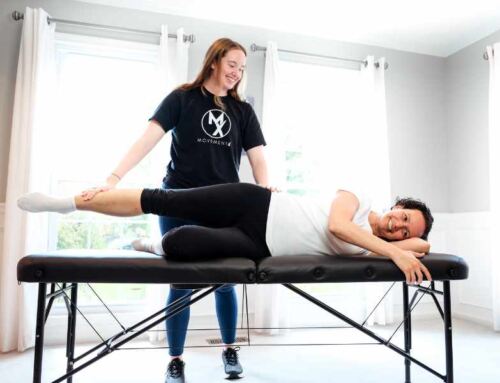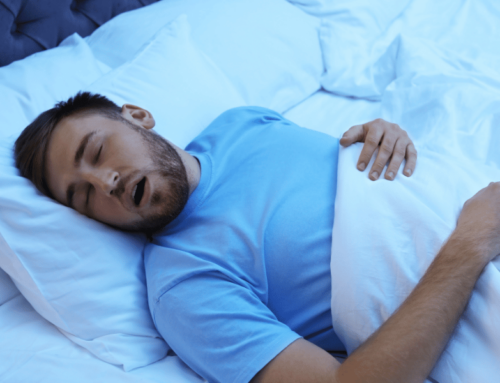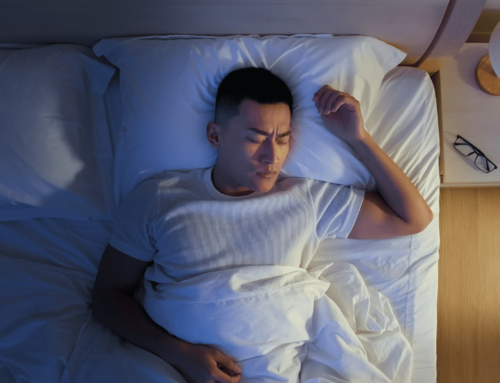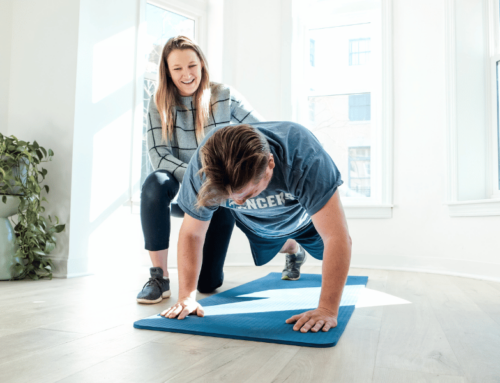Sleep Well, Move Well, Live Well:10 Evidence-based Sleep Hygiene Tips to Get Better Sleep Today
In our already busy lives trying to maintain healthy habits can be really difficult and ultimately make trying to live well feel like a lot of work. Getting great sleep shouldn’t. As I mentioned in Part 1 of this series, it’s important to try but we don’t want to find ourselves doing the sleep version of crash dieting. Our goal for improved sleep is to create lasting change so that our minds and bodies reap the benefits of improved health and disease prevention over time.
Sleep hygiene describes the habits, behaviors, and sleep environment that help a person improve the quality of their sleep. For many people, a few simple sleep hygiene changes are the easiest place to start and lay the groundwork for bigger changes down the road. This article will provide 10 easy to implement, evidence-based sleep hygiene tips to start improving your sleep and in turn living well today.
10 Research-backed Sleep Hygiene Tips
1 – Maintain a Consistent Sleep Schedule
Tip: Go to bed and wake up at the same time every day. Yes, even on weekends.
Maintaining a regular sleep schedule is one of the best ways to regulate our circadian rhythm or what many of us refer to as our internal clock. Research has consistently supported the importance of a consistent sleep pattern.
Maintaining a consistent sleep-wake schedule has been found to improve sleep quality and reduce the symptoms of sleep disorders such as insomnia. To make this even more effective, pair it with exposure to natural light in the morning. A regular sleep schedule has also been found to support better cognitive function and regulation of mood. This may be tough at first but keep at it.
Consistency will strengthen your circadian rhythm making it easier to fall asleep and wake up at the same time.
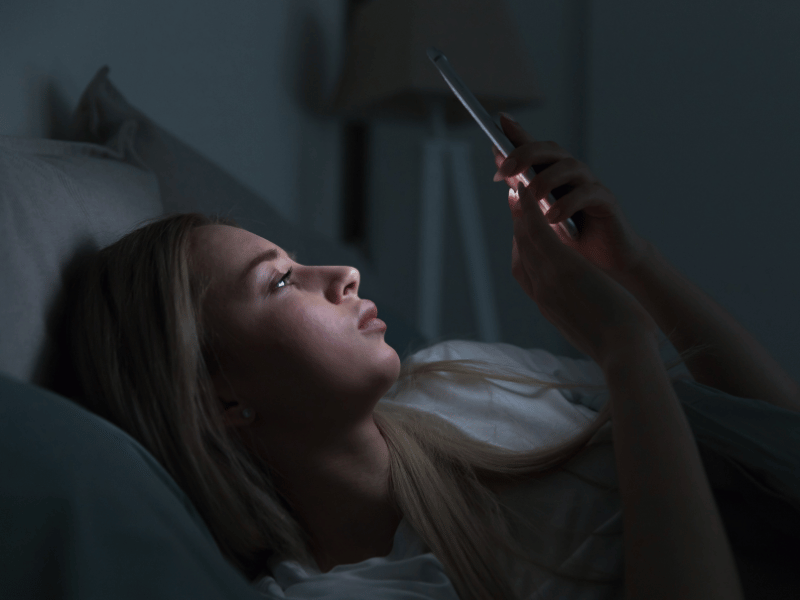
2 – Limit Exposure to Blue Light Before Bed
Tip: Avoid use of screens for at least 30 minutes before bed time.
Research has shown that exposure to blue light before going to bed can delay onset of sleep and harm our sleep quality by interfering with melatonin, a hormone that regulates sleep, or even shift one’s circadian rhythm. Even short term use of devices can significantly impair sleep. These effects are especially detrimental in kids and young adults.
Devices that emit blue light include TVs, computers, and cell phones. Ideally it is best to turn off or put away our devices before bed time but if this feels too difficult, using blue light filters or switching devices to night mode can reduce the impact.
3 – Create a Relaxing Nighttime Routine
Tip: Try to engage in relaxing activities in the time leading up to sleep.
A calming, low intensity routine before bedtime signals our brains that it is time to wind down. Research supports the use of relaxation techniques such as deep breathing exercises, progressive muscle relaxation, meditation, or light stretching as effective ways to increase sleep efficiency, reduce nighttime insomnia symptoms, and make it easier to fall asleep and stay asleep.
Since relaxation can look different for everyone these activities can also include reading, taking a warm bath or shower, relaxing with a pet or child, or whatever else calms you.
4 – Control the Temperature of Your Sleep Environment
Tip: Keep your bedroom temperature cool. The optimal temperature is between 60 and 67 degrees fahrenheit.
A comfortable sleep environment is extremely important to achieving quality sleep. While 60-67 degrees may seem too cold, this range has been found to promote the onset of sleep, improve sleep efficiency, and increase the likelihood of deep sleep.
Wearing appropriate clothing to bed and/or adjusting the weight and material of sheets and comforters can help optimize your sleeping temperature as well.

5 – Optimize Your Sleeping Environment
Tip: Make your bedroom quiet, dark, and comfortable.
While we are on the topic of the bedroom environment we should also emphasize other factors that can impact sleep quality. The ideal sleeping environment is quiet, dark, and comfortable with enough space to sleep in an optimal position.
Research has found that excess light and/or noise can significantly disrupt sleep. For those of us who live in cities, this may mean investing in things like blackout curtains, ear plugs, or a white noise machine. This may also mean reducing crowding in your bed.
It could be beneficial to encourage a dog or cat to sleep elsewhere or help your young child fall back asleep in their own bed instead of crawling in with you in the middle of the night.
6 – Avoid Heavy Meals and Stimulants Before Bed
Tip: Avoid large meals or stimulants such as caffeine and nicotine within 4 hours (or more) of bedtime.
Caffeine and nicotine can interfere with our ability to fall asleep, impair sleep quality, and limit sleep duration. More specifically with caffeine it is important to know yourself. Everyone metabolizes caffeine at a different rate.
Some people find it most helpful to avoid caffeine anytime after lunch. Heavy meals can delay sleep onset and negatively affect the stages of sleep. If eating before bedtime it is best to eat something fairly small and easily digested.
7 – Limit Alcohol Consumption Before Bed
Tip: Avoid alcohol during the hours leading up to bedtime.
It is a common misconception that drinking alcohol or having a nightcap leads to deeper, better night sleep. In reality alcohol negatively impacts sleep quality. Research has found that drinking alcohol before bed increases the fragmentation of our sleep and makes it less restorative by reducing REM sleep. After drinking alcohol people experience more awakenings during the night even if they might not remember them.

8 – Limit Naps, Especially Late in the Day
Tip: Keep naps earlier in the day and limit them to less than 30 minutes.
Everyone likes a good nap. Unfortunately, they can really interfere with our sleep if not done properly. If a nap is needed, try to get it in before 3:00 in the afternoon and limit the duration to 30 minutes.
After 30 minutes your body enters a deeper sleep resulting in feeling grogginess and fatigued. Research has found that naps taken in the late afternoon or lasting longer than 30 minutes can make it more difficult to fall asleep at night and interfere with your sleep cycles.
9 – Exercise Regularly, Just Not Too Close to Bedtime
Tip: Exercise is great for sleep but avoid intense exercise within 3 hours of bedtime.
Overall regular exercise is great for sleep and can help a person fall asleep faster, improve their sleep quality, and reduce their insomnia symptoms. However, vigorous exercise within 3 hours of bed time elevates heart rate and can delay onset of sleep.
Research has found that moderate exercise earlier in the day allows us to maximize the quality of sleep while minimizing the potential disruption to our ability to fall asleep. Regular exercise, when done properly, is a highly effective sleep aid.
10 – Listen to Your Body and Get Professional Help If Needed
Tip: If sleep problems persist in spite of good sleep hygiene, talk to a healthcare provider or sleep specialist.
Sometimes there are problems that good habits and will power just can’t fix. Sleep disorders like sleep apnea, insomnia, and restless legs syndrome often require other forms of treatment.
If you feel that there is a bigger problem interfering with your sleep it is best to talk to your healthcare provider (Note: Sleep health is within the scope of physical therapy practice so you can even talk to your trusted MovementX physical therapist) who can help with screening tests, answer questions, and connect you with the appropriate specialists.
More specialized treatments are often required to improve long-term sleep quality such as continuous passive airway pressure (CPAP) for sleep apnea or cognitive behavioral therapy for chronic insomnia.
Conclusion
Incorporating small, research-supported sleep hygiene changes into your daily routine or environment can drastically improve your sleep quality and lead to improved overall physical and mental health. And remember, there is no shame in talking to your healthcare provider to undergo more testing. Listen to your body. If you don’t feel like you are getting good enough sleep, you probably aren’t. It is estimated that 80% of people with sleep apnea (a condition that we will dive into in Part 3) are undiagnosed. You may be one of these people or could be experiencing another sleep disorder. Of all of the healthy things that we can do for ourselves, getting good sleep should be one of the easiest. I encourage you to continue in your pursuit of great sleep and living well.
References
- Baker CF, de Zambotti M, Colrain IM, et al. Caffeine and sleep: review of literature. Journal of Clinical Sleep Medicine. 202;(16)2: 193-206.
- Black D, Asnis GM, Finkelstein S, et al. Environmental factors influencing sleep quality in adults. Journal of Clinical Sleep Medicine. 2020;16(6): 1021-1027.
- Carney CE, Edinger JD, Morin CM, et al. Cognitive behavioral therapy for insomnia in patients with chronic insomnia: a randomized control trial. Sleep. 2022;45(5): 1264-1273.
- Chin SM, Lee S, Song J, et al. Effects of blue light on sleep quality and circadian rhythm in individuals using electronic devices: a systematic review. Journal of Clinical Sleep Medicine. 2021;17(10): 2023-2030.
- Le Bon O, Ratti C, Masson C, et al. Alcohol and sleep: effects on sleep architecture and restorative sleep. Sleep Medicine Reviews. 2021;58:101465.
- Rattenborg, NC, Amalaner, CJ, Larkin JE et al. Sleep patterns and circadian rhythms in humans and other mammals. Sleep Medicine Reviews. 2019;44: 102-115.
- Rattenborg, NC, Amalaner, CJ, Larkin JE et al. Napping and sleep quality: the impact of nap duration and timing on sleep quality and onset. Journal of Sleep Research. 2019;28(4): e12821.
- Rusch H, Chan G, Lee K, et al. The impact of physical activity on sleep insomnia: a systematic review. Journal of Sleep Research. 2021;30(5): e13161.
- Sargent C, Lushington K, Dawson D. The impact of room temperature on sleep and sleep architecture in healthy young adults. Sleep and Biological Rhythms. 2018;16(2): 235-241.



